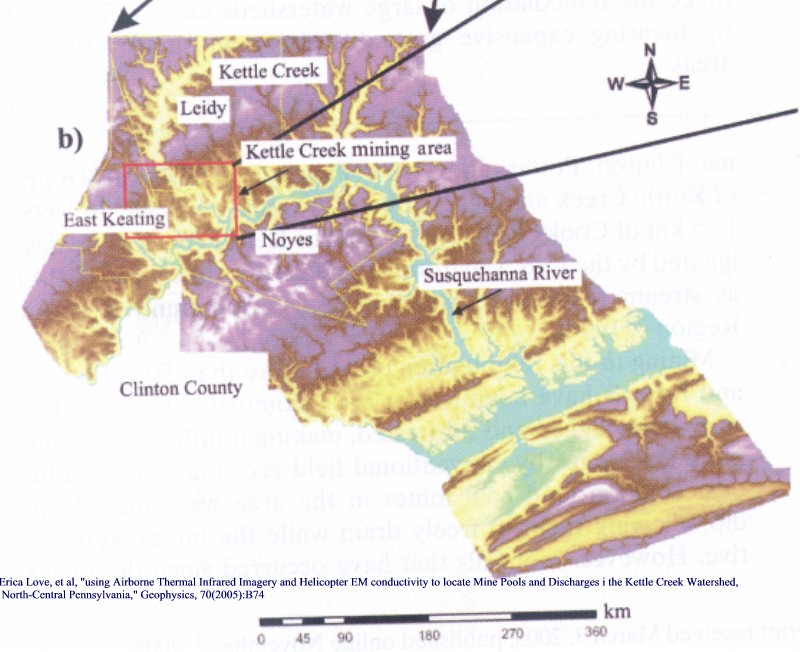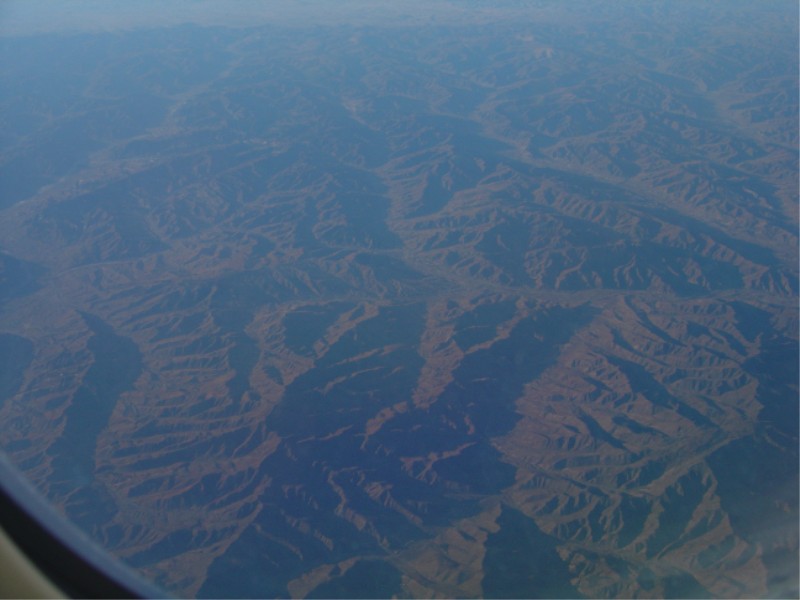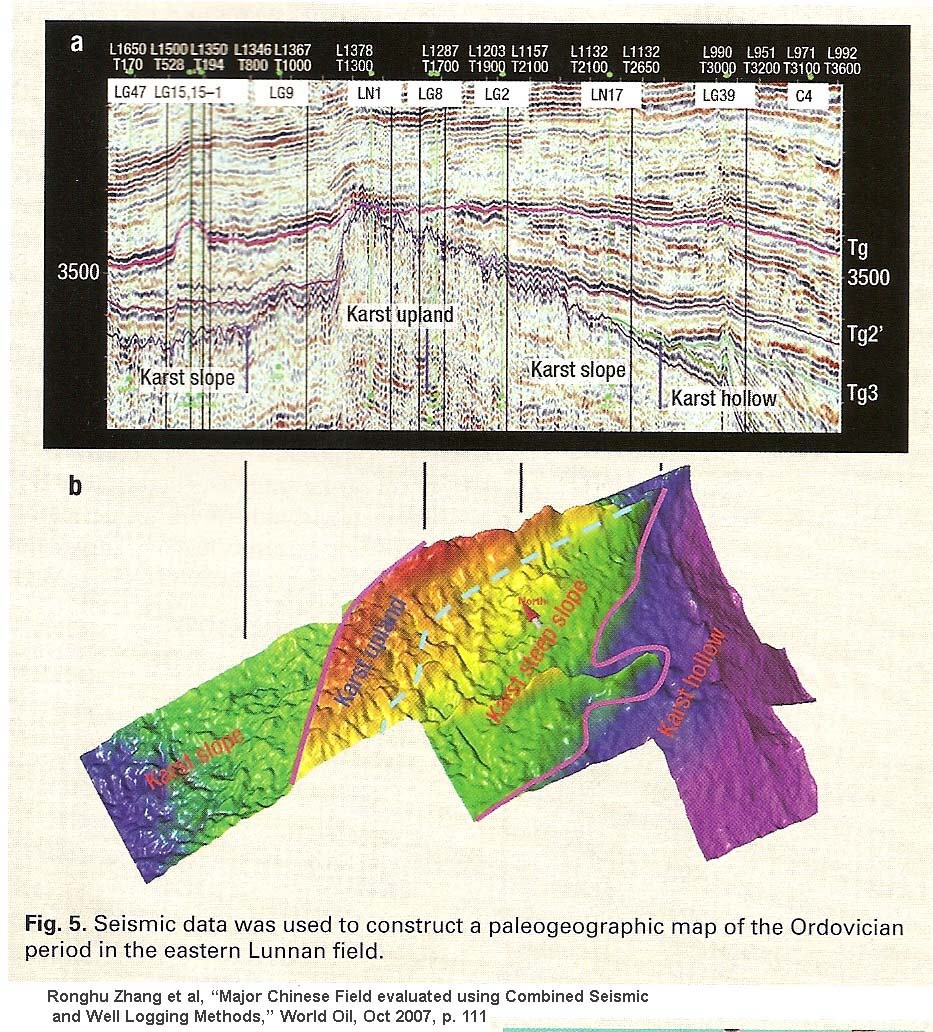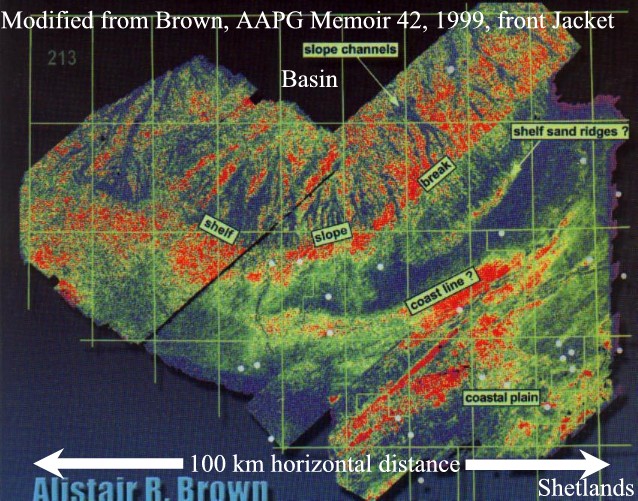Creation Science Articles
We've Done Rivers, Let's Do Canyons
Copyright 2003 G.R. Morton. This can be freely distributed so long as no changes are made and no charges are made.
River channels are not the only things seen buried in the geologic column. There are large canyons as well.
The first picture is of a dendritic incised canyon found underneath the Mahakam Delta, Kalimantan, Indonesia. Such features only form under subaerial conditions, not under water at all. Underwater canyons don't have that sharply dendritic pattern. It is from Alistair R. Brown, Interpretation of Three-Dimensional Seismic Data, AAPG Memoir 42, 1999, p. 115
Why were subaerial canyons dug during the middle of the global flood? Or is this another case like Samuel Shenton, the leader of the flat earth society who said when shown photos of the round earth from the moon: "It's easy to see how a photograph like that could fool the untrained eye."

For those who think this isn't the pattern of a subaerial (exposed to the air, wind and rain) erosion, here is the topography from the Kettle Creek area of Pennsylvania. You can see the similarity to the buried canyon.

The third picture I have is of an eroded surface in the Ordovician of China. This is due to the careful mapping of an erosional event on a three dimensional seismic volume. It is in the Tarim Basin in far western China and this erosional surface is buried 5200 meters (that is, 17,000 feet deep). It shows a branching drainage pattern as well. Such features could not have formed in the global flood in just a few years. The rock being eroded into is hard limestone. Since as Russ Maatman writes:
"But a cup of water dissolves only two ten-thousands of an ounce of limestone." (The Impact of Evolutionary Thought: A Christian Perspective
(Sioux Center: Dordt College Press, 1993), p. 55)
That must be fresh water because sea water already has all the limestone it can hold dissolved within it. The surface shown below has had thousands of feet of limestone removed by erosion and that would take time with numbers like this. It would take 100,000 years of constant rainfall to erode a ditch about 6 feet deep. Yet on this erosional surface taken from a sonogram of the earth, we find hundreds of feet of relief. Note also the branching channel patterns due to drainage on this picture.

Below is a modern example of this identical type of topography. This is from about 25,000 feet flying north of Beijing.

Here is another example of buried topography from western China. It shows that this type of topography, which takes a long time to be formed(like the picture of the erosional lands I took from the air north of Beijing), can then be buried deeply by thousands of feet of other sediments. The upper picture shows a seismic line across the topography. The lower picture shows the map of the surface of the irregular buried surface seen on the upper seismic. Look closely at the upper picture and you will see colored lines marking the rock layers Tg3, Tg2' and Tg. You will also see a dark blue line running along the karst. These lines are the marks the geophysicist makes on seismic when he or she is mapping the geologic structure of the earth. There are several very interesting things to see on this seismic line. On the right side, the Tg3 marker runs into the Karst upland. That Tg3 rock layer represents either a lake or sea deposit which was laid down when the Karst was an island. The same with the Tg2' bed. Since the Tg2' bed is above the Tg3, it was deposited AFTER the Tg3, so we can see the relative times between events. What we see is that the karst island was slowly being buried. The lack of Tg2' and Tg3 sediment on the peak of the karst island shows that there was no sediment filled water covering the island at that time. The island was finally covered only after the Tg event.
We see two periods of erosion in this picture. The irregular karst surface is due to erosion as is seen on the surface today north of Beijing. But just below the TG level, on the right side of the seismic line, one can see the lower beds truncating into the Tg level. That truncation shows that some sediments were laid down over the karst upland and then later eroded off of that upland. That means there is a time separation between the deposition of the rocks below the purple Tg event and the beds laid down above it. How much time? Enough time to erode that much sediment. It was more time than merely a day or two.
Now, the seismic line in the upper picture is one of thousands of closely spaced seismic lines. The typical 3D seismic survey is about 10 x 20 kilometers long and has one of these lines every 12 meters. So, modern seismic is like a sonogram of the earth, and they show incredible detail about the geologic processes. When the times of the karst surface itself are colored and laid out on a map, they show the eroded topography seen in the lower picture. You can actually see the drainage pattern in that surface. YECs need to explain this kind of data. You won't see any of this kind of science shown in any of their books, which means they are showing their gullible followers only half the story.

The next picture I have is on the jacket cover of Alistair R. Brown, Interpretation of Three-Dimensional Seismic Data, AAPG Memoir 42, 1999. It shows a 5500 square kilometer region of the Faeroes basin west of the Shetland Islands. One can see the Balder-aged submarine canyons.
Notice that they are different in morphology from the first canyon which was subaerial. These are submarine canyons. The Balder is a formation of Eocene age. It is buried 5500 feet below the ocean floor. What you see here is a buried shelf edge. These things don't form in turbulent flood waters. They only happen by processes we see happening today.
Ignoring these issues means that one is not facing up to reality. These pictures (and unpublished ones even more devastating to YEC views) are what I deal with every single day at work. I resisted changing my view for 20 years. Hopefully you all are smarter than I. But if not, I will stay with you for the next 20 years showing you data and listening to your silence. If YEC were correct, YECs would have an explanation. Here is the last picture.

Did you know that you can be a Christian,
and believe that the earth is billions of years old? The
author of this article, Glenn Morton, made the transition from young
earth creationism to old earth creationism. To learn more
about old earth creationism, see
Old Earth Belief,
or check out the article
Can You Be A
Christian and Believe in an Old Earth?
Feel free to check out more of this website. Our goal is to
provide rebuttals to the bad science behind young earth creationism,
and honor God by properly presenting His creation.
